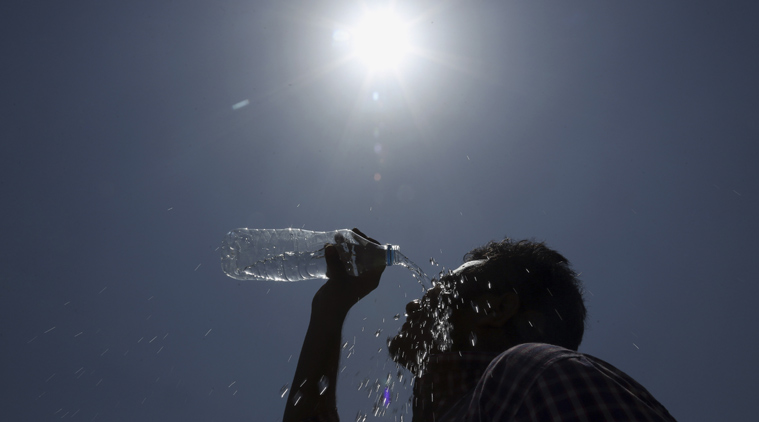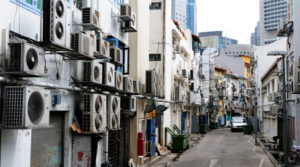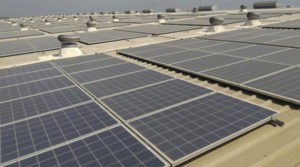UN Applauds India’s Cooling Plan ICAP

It’s no secret that the Indian summer is getting hotter and more unpredictable. Not only have average temperature and number of really hot days climbed,places hitherto considered comfortable are also making the switch to cooling options. Over 2,000 lives have been lost due to heat waves and irregular monsoons in just the past year. With economic growth and urbanization, this has meant a huge overall growth in cooling demand. The number of air conditioners in India is expected to rise from 15 million in 2011 to 240 million in 2030. Studies also suggest that the cost to the Indian economy due to lost productivity from extreme heat would exceed $450 billion by 2030.
Keeping this in mind, on world Ozone day (16th September) India became the world’s first country to release a draft called India Cooling Action Plan or ICAP. The Draft which was prepared by Ozone Cell of the MOEF was officially launched Dr. Harsh Vardhan on 9 Mar 2019. The plan aims at providing and using sustainable cooling technologies while keeping the ozone or other GHGs under permissible levels. It provides a 20-year perspective, with projections for cooling needs in 2037-38.
“The overarching goal of ICAP is to provide sustainable cooling and thermal comfort for all while securing environmental and socio-economic benefits for the society. This will also help in reducing both direct and indirect emissions.” said Dr. Vardhan.
A recent study from the UN’s Sustainable ‘Energy for All’ initiative puts India in the top nine countries at greatest risk from lack of access to cooling technology that also keeps food fresh, vaccines stable and children in education.

India Cooling Action Plan (ICAP)
ICAP addresses cooling requirement across sectors and lists out actions which can help reduce cooling demand. Its thrust is to look for synergies in actions for securing both environmental and socio-economic benefits. ICAP’s overarching goal is to provide sustainable cooling and thermal comfort for all while securing environmental and socio-economic benefits for the society. Goals suggested in ICAP are
- Reduce refrigerant demand by 25% to 30% by year 2037-38.
- Reduce cooling demand across sectors by 20% to 25 % by year 2037-38.
- Reduce cooling energy requirements by 25% to 40% by year 2037-38.
- Train and certify 100,000 servicing sector technicians by 2022-23, in synergy with Skill India Mission.
- Recognize cooling and related areas as thrust area of research under national science and technology programme to support development of technological solutions and encourage innovation challenges.
Broad objectives of ICAO include
- Assessment of cooling requirements across sectors in next 20 years and the associated refrigerant demand and energy use.
- Map the technologies available to cater the cooling requirement including passive interventions, refrigerant-based technologies and alternative technologies such as not-in-kind technologies.
- Suggest interventions in each sector to provide for sustainable cooling and thermal comfort for all. Focus on skilling of refrigeration and air-conditioning (RAC) service technicians.
- Develop R&D innovation ecosystem for indigenous development of alternative technologies.
While many environmental groups have been dismissive of the plan, many experts believe India’s plan is sensible and achievable. Benjamin Hickman, a UN Environment technical advisor based in India says, “This plan acknowledges head-on that Indian cooling demand will grow eightfold in 20 years and recommends a myriad of cross-cutting solutions that urgently need to be implemented and scaled up.”
Prioritizing Varied Cooling Solutions
ICAP breaks away from routine by not just focussing on efficiency but on various other solutions from Fans, unconventional cooling, building designs, and many others. Among the new technologies is district cooling—the distribution of cooling energy from a central plant to multiple buildings.
The Ministry of Environment, Forests and Climate Change is co-chair of the UN Environment-led District Energy in Cities Initiative, which is working with three pilot cities—Amaravati, Rajkot and Thane – in India to demonstrate these technologies. Three quarters of the buildings required for 2030 have yet to be built given the Smart City plan by the GoI, so there is a huge opportunity for new urban developments to use district cooling, which can be up to 50 percent more efficient than stand-alone solutions.
“UN Environment praises India’s leadership in being the first country to adopt a comprehensive plan for the cooling sector,” says Atul Bagai, Head of UN Environment’s India Country Office. “Singling cooling out is vital to scaling up and targeting action on what has for years been a silently growing environmental catastrophe, and India’s Cooling Action Plan should set the benchmark for other countries to follow. UN Environment stands ready to support India to achieve and surpass its targets.”
We cannot ignore the fact that these goals are huge, and there has been apprehensions, but having said that if the pilots in the three cities do function, the ICAP will have a rough template to work with. However, we want to add that the template should only work as an outline, and not underestimate the importance of customization. More often than not we have seen policy lethargy from the implementer side where after success, lack of creativity stymies a good plan. We hope the private sector and city architects will not allow the ideas to stagnate and come up with exclusive plans to address local problems and improve ease of living, working and functioning of new cities.









